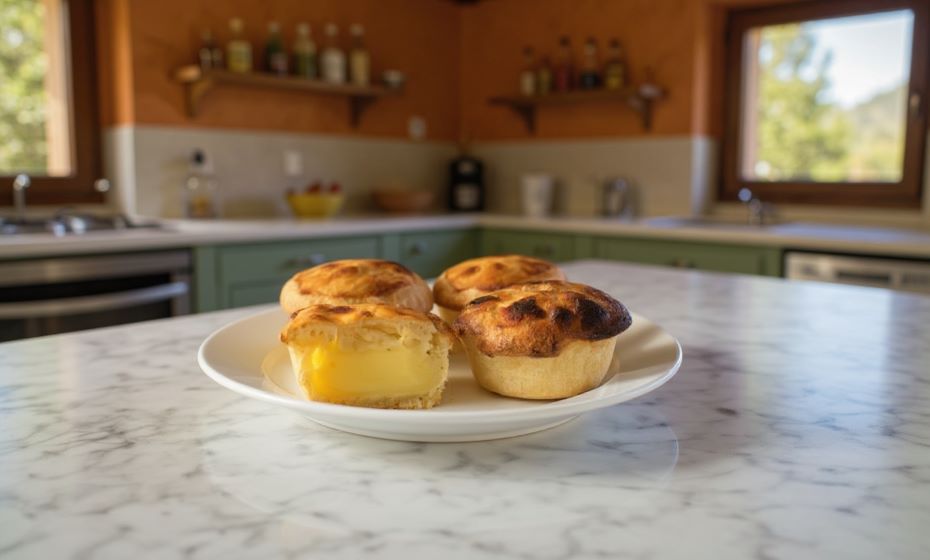Ingredients
Equipment
Instructions
- Pastry CreamStart with the heart of the pasticciotto, the silky custard.In a saucepan, heat the milk with lemon zest or vanilla until it’s warm but not boiling. In a bowl, whisk together the yolks, sugar, and cornstarch until smooth and pale. Slowly pour in the warm milk while whisking constantly.Return the mixture to the saucepan and cook over medium heat, stirring continuously, until thick and creamy (about 5–7 minutes). Remove from heat and stir in a small knob of butter for extra shine. Cover with plastic wrap directly on the surface and let cool completely.
- Shortcrust PastryIn a large bowl, combine flour, baking powder, and salt. Add the cold butter cubes and rub them into the flour with your fingertips until the texture resembles coarse crumbs. Add sugar, eggs, and vanilla or zest, then mix just until the dough comes together, soft but not sticky.Shape into a ball, wrap it, and let it rest in the refrigerator for at least 30 minutes. This helps the dough relax and become easier to roll.
- Shape the PastriesPreheat your oven to 180°C (350°F).On a lightly floured surface, roll out the chilled dough to about 3 mm (⅛ inch) thick. Cut out circles large enough to line your molds, pressing gently to fit the bottom and sides.Spoon or pipe the cooled custard into each shell, filling them almost to the top. Then, cover with another thin layer of pastry, sealing the edges carefully. Trim away any excess dough and brush the tops with beaten egg for a beautiful golden finish.
- Bake Until GoldenPlace the molds on a baking tray and bake for 20–25 minutes, or until the tops are golden brown and the aroma fills your kitchen.Let them rest for 5–10 minutes, just long enough to cool slightly, but still warm inside. The perfect pasticciotto is enjoyed when it’s tender and comforting, not cold.
Notes
Keep It Cool, Keep It Crumbly: The secret to the perfect pasta frolla (shortcrust pastry) is temperature. Use cold butter and chilled dough — this helps create that tender, crumbly texture without turning greasy or tough. If your kitchen is warm, pop the dough back into the fridge for a few minutes before rolling it out.
Don’t Overwork the Dough: Handle the dough gently, just until it comes together. Overmixing develops gluten, making the pastry harder and less delicate. Think of it as coaxing, not kneading, Italian pastry should feel effortless and light.
The Cream Is Everything: Your custard (crema pasticcera) should be smooth, thick, and fragrant. Stir constantly while cooking to prevent lumps or burning. If you’d like a richer flavor, add a small knob of butter at the end or infuse the milk with a strip of lemon peel before heating.
Bake Until Golden, Not Brown: Every oven is different, so watch carefully during the last few minutes of baking. You’re looking for a soft golden hue, not dark brown. The crust should be firm but still tender when pressed lightly.
Choose the Right Mold: If you can, use oval metal molds, the traditional shape of Lecce. They heat evenly and create that signature golden shell. If you don’t have them, muffin tins or small tart molds work just fine.
